By G. L. Pease
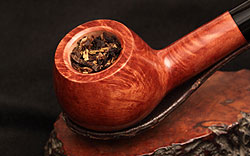 It’s hard to believe this is already the fifth edition of this no longer new column. It seems like only yesterday I was worrying over whether or not there would be enough interest, enough questions coming in to justify it and sustain it, and here we are, five months later, with me trying to keep up. Thanks to all of you for your encouragement and support. From the beginning, some really great questions, and a few tough ones, have found their way to the mail bag, and it’s always fun going through the archives to choose questions for the month. This month, I chose a few that seemed to me to be related, at least obliquely, so let’s dive in to those and see where we end up.
It’s hard to believe this is already the fifth edition of this no longer new column. It seems like only yesterday I was worrying over whether or not there would be enough interest, enough questions coming in to justify it and sustain it, and here we are, five months later, with me trying to keep up. Thanks to all of you for your encouragement and support. From the beginning, some really great questions, and a few tough ones, have found their way to the mail bag, and it’s always fun going through the archives to choose questions for the month. This month, I chose a few that seemed to me to be related, at least obliquely, so let’s dive in to those and see where we end up.
From Fred: One of the methods for making blends smoother, that I’ve seen discussed for a while, include ‘tin baking,’ home stoving and even using crock pot cookers. Depending on who you talk to, these techniques seem to involve the use of heat, different lengths of time and sealed containers. Some will use the heat of the summer sun and leave sealed tins in direct sunlight for weeks at a time. I’ve read speculation on what’s being done in terms of speeding up fermentation to melding the blend components. I’d like to know more about what’s really going on with the changes that heat brings to non-aromatic blends, and how to best achieve the desired results.
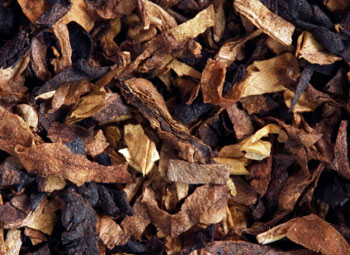 A: Heating tobacco can change it dramatically, and the results can be mixed, for a variety of reasons. When tobacco is heated, in addition to chemical changes that take place through things like partial caramelization of sugars, creation of flavor components via enzymatic reactions with proteins, and so on, there’s the more obvious integration of flavors that comes simply from the increased pressure in the tin. One thing heating does not do, though we’ve all read it on the net, is accelerate or "jump start" the natural aging process. In fact, it may actually prevent it, at least some aspects of it, since the microorganisms responsible for things like secondary fermentation are killed by high temperatures before they’ve had a chance to complete their work.
A: Heating tobacco can change it dramatically, and the results can be mixed, for a variety of reasons. When tobacco is heated, in addition to chemical changes that take place through things like partial caramelization of sugars, creation of flavor components via enzymatic reactions with proteins, and so on, there’s the more obvious integration of flavors that comes simply from the increased pressure in the tin. One thing heating does not do, though we’ve all read it on the net, is accelerate or "jump start" the natural aging process. In fact, it may actually prevent it, at least some aspects of it, since the microorganisms responsible for things like secondary fermentation are killed by high temperatures before they’ve had a chance to complete their work.
Aging of tobacco is both biological and chemical, and is much more complex than it may seem, and the number of variables that exist is large, so painting a single, comprehensive picture is probably impossible. Therefore, since my own understanding is admittedly far from complete on the subject, I’ll resort to wild hand-waving and big words in the hopes of fostering an illusion of dazzling brilliance.
When the tobacco is first tinned, there’s ample oxygen and moisture present for aerobic microorganisms, those that require oxygen, to do their work. As they consume the oxygen and whatever food they may feast upon, they’ll produce some metabolites that we consider "good things," but, in addition, they’ll expire CO2, which will ultimately result in the downfall of most of them. If present, facultative and obligate anaerobes, bacteria that can or must live in an oxygen free environment, are then free to do their thing. Additionally, during all of this microbial folderol, conditions within the little biosphere that exists exclusively within the walls of that sealed tin are changing, and a cascade of organic reactions that can be highly sensitive to changes in environment is taking place, producing other interesting and desirable byproducts, and sometimes some that aren’t so desirable. (If you’ve ever opened a well aged tin of a virginia/perique blend, you may have noticed an immediate sharp, unpleasantly pungent bite that dissipates within a few minutes, being replaced by a wonderful, deep, slightly sweet aroma that lingers. Both are the result of the processes of aging.)
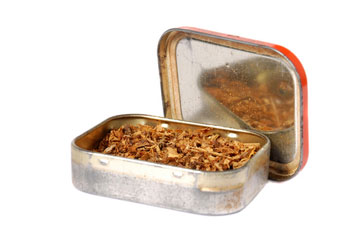 So, there’s this interestingly choreographed dance going on in the tin, and relatively small external changes can result in quite dramatically internal changes over time. Two tins of identical tobacco stored under different conditions for a few years may result in very different experiences when opened. If one of those tins is "cooked" prior to storage, and the other one isn’t, those differences will likely be magnified. In fact, I once wrote about two samples of the same blend, one of mine, from a similar vintage, one of which I had cellared, the other cellared by a friend after having been slightly, though inadvertently cooked. In a blind tasting, I probably wouldn’t have recognized them as the same tobacco.
So, there’s this interestingly choreographed dance going on in the tin, and relatively small external changes can result in quite dramatically internal changes over time. Two tins of identical tobacco stored under different conditions for a few years may result in very different experiences when opened. If one of those tins is "cooked" prior to storage, and the other one isn’t, those differences will likely be magnified. In fact, I once wrote about two samples of the same blend, one of mine, from a similar vintage, one of which I had cellared, the other cellared by a friend after having been slightly, though inadvertently cooked. In a blind tasting, I probably wouldn’t have recognized them as the same tobacco.
All that to say, if your intention is to smoke it soon, this sort of post-production stoving can integrate the flavors and perhaps mellow the smoke. But, if your intention is to age the tobacco for a year or more, you’d be best off leaving it alone, and storing it in a cool, dry place, letting nature take its course. On the other hand, one man’s fish is another’s poisson, and some people have found fairly well controlled methods that deliver something they truly enjoy. To each his own!
From Adam: When you are setting out to create a new blend, how much of it is "pre-planned" as opposed to random trial and error? For example, do you think, "I sure love blend X, but if I was to up the perique by 3% and substitute a Red Va. for the Lemon, it would be off the chain!"; or do you simply head into the blending room with an idea of a finished product, and go?
A: I work in different ways with different blends, but it’s always pre-planned, at least in some way. Often, I’m inspired by something I’ve smoked, either recently, or long ago. The more memorable smokes leave a lasting impression that I sometimes call upon in the hope of approaching something similar to a new blend, even though I never expect to replicate these ephemeral memories.
Other times, I’ll be heading in a certain direction with a blend, and something will strike a chord, leading me to new ideas, different concepts. Frequently, in fact, while developing a blend, I’ll take notes of different approaches I’d like to take with it in the future, and those become the springboards for new ideas.
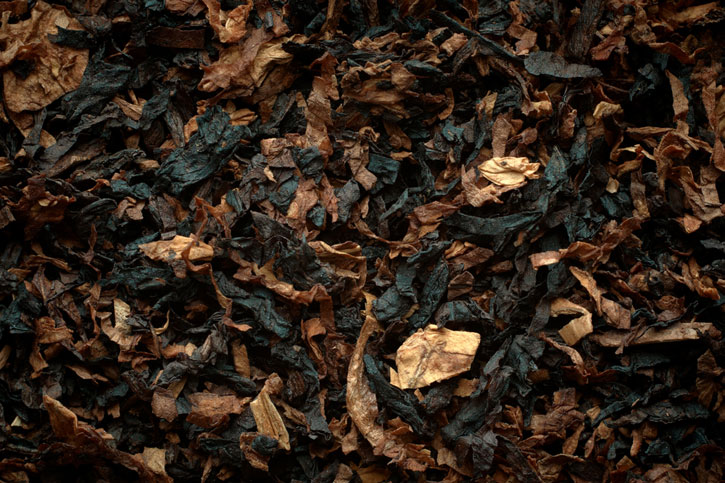
There have been cases, such as with Bohemian Scandal, when a certain leaf, in that case, a batch of particularly brilliant vintage Syrian, provides the central core of a new composition, and I’ll work around it, exploring different approaches, different directions, until things take form. In those cases, what I’m after is bringing out the best of that leaf, giving it the necessary support so that it can shine, but in a balanced and harmonious way.
In every case, the early part of the development process is directed by some sort of idea, and it’s always the easiest. It’s the fiddly fine-tuning, the tiny adjustments that take the greater effort and the greatest amount of time. It can be frustrating at times, but it’s also where a lot of the deep enjoyment lives for me. It’s often amazing how much different a blend will taste even a couple hours after it’s first put together, and how I can think I’m close to what I’m chasing, but a few days will reveal that I’m on the wrong track entirely. One thing is constant; creating new blends is never dull!
Romeo writes: I’ve always been one for a good gustatory experience, and have recently delved headlong into the specialty coffee industry. Commonly referred to as the "Third Wave," coffee is experiencing a Renaissance that full explores every aspect of flavor profiling, from aging, blending, differing roasts and grinds and weights, and even origin and terroir delineation. The search for the elusive "God in a cup" has become a veritable gold rush. My question to you, then, is to perhaps shed some light on how a tobacco blender develops the palate, selects tobaccos (including the process of sourcing and defining what flavor profile is sought), and decides the components and processes that result in the many exquisite offerings that are available today, yours well-represented amongst them.
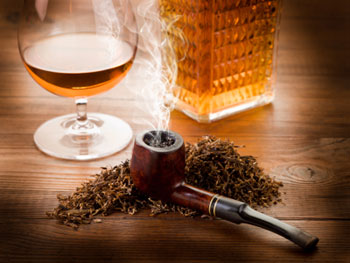 A: Developing a palate, either as a professional or as an avid enthusiast, is a never ending process, as each new critical experience is colored by the experiences that came before it. The first time a taster "discovers" a certain aroma or flavor in something, it might subsequently be found, perhaps in softer focus, in things previously examined, changing our perceptions of things we thought we’d fully explored. The more we experience, the more we taste. In a way, we’re educating our senses every time we focus on what we’re tasting or smelling, or every time we read about or discuss with others what they’ve tasted, and we really can’t escape the effects of those influences.
A: Developing a palate, either as a professional or as an avid enthusiast, is a never ending process, as each new critical experience is colored by the experiences that came before it. The first time a taster "discovers" a certain aroma or flavor in something, it might subsequently be found, perhaps in softer focus, in things previously examined, changing our perceptions of things we thought we’d fully explored. The more we experience, the more we taste. In a way, we’re educating our senses every time we focus on what we’re tasting or smelling, or every time we read about or discuss with others what they’ve tasted, and we really can’t escape the effects of those influences.
By way of example, wine tastings are often done in silence, both to allow concentration, and to preclude one taster’s impressions from influencing the perceptions of others. I attended an event with Robert Mondavi years ago where I first became aware of just how much influence others’ perceptions can have on our own experience. We were gently instructed to quietly sniff and taste, and write down our impressions. Then, we’d discuss what we’d recorded, and taste again. Inevitably, at least one component that someone else had noted suddenly leapt from another’s glass in three dimensions, though it might have gone unnoticed before.
These influences can be both bane and boon, depending on how the smoker is swayed, so it’s always good to be aware of how easily we can lose our objectivity, and how our subjective reactions can be altered by external factors. (Read my recent column, The Power of Suggestion, for more on that.)
For learning, developing a sensory vocabulary that can be drawn upon to critically taste, reading and discussing with others can open doors that we may not have even known to exist. Online and printed reviews offer a wonderful boon to today’s smoker; there’s more information available about different tobaccos and their taste profiles than ever before. Of course, tasting individual components, both in isolation and in various combinations, is an ideal way to gain understanding of their characteristics, but this isn’t always practical. Fortunately, it’s not the only way. If the smoker samples, for example, a variety of straight virginias, and a variety of virginia/perique blends, he quickly learns to discern the contribution of the perique. It’s a slower process than tasting the tobaccos in isolation, but it can certainly offer some interesting insights.
A question paraphrased from one a few have asked: A lot of discussion revolves around the construction of a pipe as determining how well it will perform. Others are more convinced that the wood is the most important element in a good pipe. Which is it?
A: The answer is yes.
I think it’s important to make a distinction between flavor and performance. (I’m sure you can guess which side of my toast is buttered.)
In my experience, the wood has a great deal more to do with the way a pipe tastes than the construction does, while the construction, generally, has more to do with how a pipe delivers that taste (its performance). I’ve often said that I’d rather have a poorly made pipe from exquisitely delicious briar than a perfectly made pipe from a railroad tie. Most construction flaws are correctable; bad briar isn’t.
My appreciation of a certain favored pipe marque serves well to demonstrate this. I’ve had a lot of pipes from this maker over the past 30 years. I’ve had a couple that were absolutely horrible, harsh, and tortuous to smoke, but the rest have ranged from good to superb. The construction has been all over the map. Some of the older pieces have had such narrow airways through the mouthpiece that it’s hard to get a skinny pipe cleaner through them, let alone the fluffy ones I prefer. These pipes aren’t effortless smokes, but most of them have delivered wonderful, flavorful smokes. A bit of effort with needle files and my Correspondence School dental tools is all it’s taken to see them sorted, making good pipes even better. A lot of old pipes, too, have smaller airways than is contemporarily popular, and smoke like dreams. Further, I’ve had some pipes that are terribly drilled, yet delivered wonderful smokes. (In fact, a recent addition to my collection delivers an absolutely delightful smoke, despite being drilled about 3-mm too high, and off-center, things which conventional wisdom says will guarantee a bad smoke. So much for that. The pipe smokes to the bottom effortlessly and without incident.) It’s not a distant leap to conclude that it’s the wood that is responsible for the flavor, the construction for the smoking dynamics.
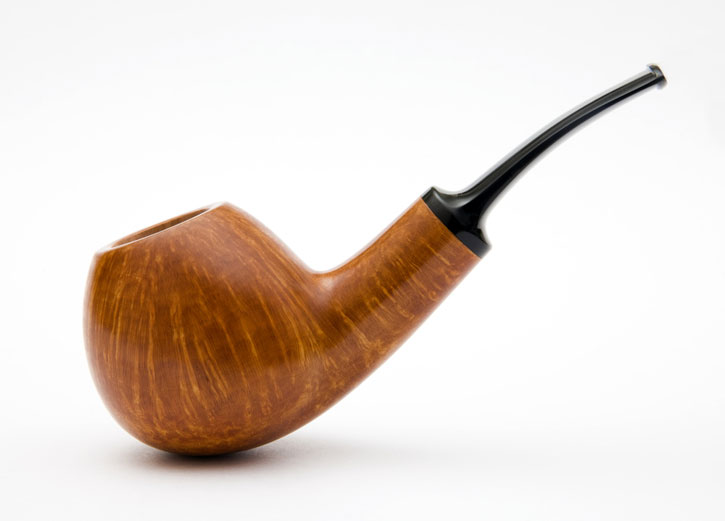
On the other hand, I’ve had pipes made from briar that tasted terrible, and, some of these have been meticulously crafted. I’ve actually tried rather dramatic secondary curing methods, and a variety of bowl coatings, to no avail. One pipe in particular, despite being perfectly constructed, delivered a nasty tasting smoke through over 100 bowls over a year’s time before I finally simply called it quits. Bad briar is bad briar, and no amount of "engineering" will fix it.
A particular pipe from one of my favorite makers comes to mind. He got a batch of bad briar, and didn’t notice it until a couple pipes got out into the world. I ended up with one. It was dreadful, and nothing, absolutely nothing helped it. I smoked the hell out of it, to the point of putting a much thicker cake than I normally prefer on the walls, and it remained horrid.
I’m sure we’ve all got stories of pipes that were beyond redemption. It’s hard to draw rigorous conclusions from a small number of data points, but many conversations with veteran smokers seems to converge on some agreement. Briar is the more important component to a delicious pipe. Internal construction is the more important component to a pipe that smokes easily. The construction certainly has some influence on flavor, and the wood may have some influence on smoking performance, but, beyond a small amount of possible overlap, these two aspects of a pipe are mostly distinct.
I think there are a couple reasons so many focus on construction. For one thing, it can be used as something of a bellwether for the overall care a pipe maker has put into the entire process, from briar selection and curing to the final finishing. It’s easy to conclude that a well crafted pipe is likely to be made from the best materials. Why would a maker invest so much time and energy on something that isn’t likely to perform to high standards? It’s a reasonable assumption. Construction is what the maker has total control over, and what the buyer can see. But, the pipe maker doesn’t grow the wood, harvest it, control its drying, cutting or boiling, and is always slightly at the mercy of nature’s folly. Who’d want to talk about that?
-glp
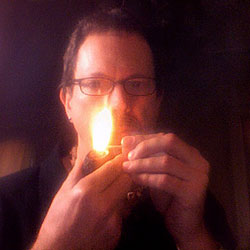
Since 1999, Gregory L. Pease has been the principal alchemist behind the blends of G.L. Pease Artisanal Tobaccos. He’s been a passionate pipeman since his university days, having cut his pipe teeth at the now extinct Drucquer & Sons Tobacconist in Berkeley, California. Greg is also author of The Briar & Leaf Chronicles, a photographer, recovering computer scientist, sometimes chef, and creator of The Epicure’s Asylum. |


















Ty GLP excellent replies to some good questions.Leaves a lot to think about!
great read but i still dont know who is Haddo
Great reading
An eagerly anticipated column that never fails to deliver! As an addition to my question, I’d love to hear you expand on the process of sourcing and blending components in order to reach a certain flavor profile. Your example of Bohemian Scandal’s remarkable (and sorely missed) crop of Syrian is a great jumping-off point; for example, why did you never re-create the blend with other components? Was the flavor profile so singular that it couldn’t be duplicated, or was it a decision based more in letting its legacy stay as a benchmark of sorts? With coffee, one can source target flavor profiles of components fairly consistently from crop to crop, and also control a large part of the finished blended profile through roasting and adjusting blend percentages–how much of this happens with tobacco blends?
Simply amazing as always;…thanks Greg.
THANK YOU GLP GREAT REPORT.
TEDDY
Excellent! I agree on briar quality. I have made a few pipes from butt ugly briar that smoke wonderfully. I also have had one or two from expensive plateau blocks that just plain are firewood as fr as the quality of the experience when smoking them.
Thanks for the clarity on the issue of tin baking. You’ve put the big issue of the “jump start” of the natural aging process myth to rest. Thanks for the insights.
Thanks for the kind words, gentlemen. Fred, as far as putting a myth to bed, we both know that will never really happen. 😉
Great read and very informative. Thanks
Greg great read as always still my favoriate blender-FC.
Excellent article as always, Greg. Look forward to next month!
Informative and entertaining. Thanks, Greg!
Simon
Enjoyed the (as usual) educational article, Greg! I’d like to know if finish determines the smoking ability of a pipe: i.e., hard varnish-type, versus rubbed oil and natural wood beneath? I asthetically prefer a warm oil-finish look to a highly polished, shiney finish.
The only thing that will ever put the idea of tin baking to bed is when everyone has tried it and found the results to be immeasurable or disappointing.
Love to read your writes, Greg.
Jess, there’s always controversy over whether or not the finish affects the way a pipe smoke, and it’s always dangerous to attempt to draw hard conclusions. My feeling is that it does make a difference, based on more than one experience, the most notable being a pipe I ruined with a plastic finish. Early in my smoking days, I had little rusticated pipe that was charmingly shaped and smoked like a dream, but the surface was dull and drab. So, I decided to put a nice, shiny new finish on the thing. Even well after the smell of the finish was no longer detectible, the pipe smoked horribly. Where it had been cool, smooth, delicious, it was now hot, harsh and soggy. Was it the finish?
I’ve also removed hard finishes from a few pipes, to find their smoking characteristics improved. Was it the finish?
I’ve never, to date, smoked a pipe with a hard finish that smoked well. Is it the finish?
In the first case, certainly an extreme one, the finish I applied very likely ruined the pipe. But, in the case of “varnished” pipes, it’s not so clear. The pipes were probably not made from the finest briar in the first place, so the wood, itself, could have been the culprit. But, in those cases where I’ve removed a hard finish, replacing it with wax or even a thin shellac, and the pipe has improved, it’s certainly tempting, and reasonable, to assign blame to the finish. Yet, “cheap” pipe manufacturers have used this sort of finish for ages. If it’s so bad, would they continue to use it? I suppose if a varnished pipe is the only thing a smoker has ever smoked, it’ll just be accepted as the way it is, and those smokers will likely argue that it doesn’t matter much, if at all.
So, my answer is, yes, it matters, but how much it matters probably depends on the smoker.
Kurt, tin baking has its place, and I don’t mean to imply that it’s always a bad thing. Its devotees like the results they get, and, in fact, there have always been tobaccos produced that rely on heat as part of their processing to deliver their distinctive qualities. My point is that while it may produce a result that is pleasing in the short term, the long term prognosis may be less desirable.
Thanks much for another informative well written article. I’m new to pipe smoking and I’m learning a lot from you. Thanks again.